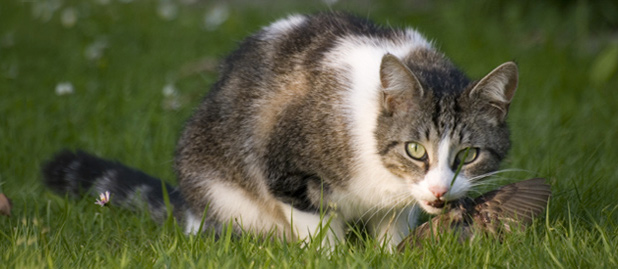|
Mortality Threats to Birds
Photo by Gaeten Pirour, www.pixmin.org
Although much of the necessary work to conserve bird species and populations can be carried out through landscape-level habitat management, protecting certain on-the-ground sites, and ensuring that bird protection laws are widely upheld, some threats to birds can only be addressed by changing specific human activities that cause direct mortality to birds. Such threats include the misuse of pesticides, harmful fisheries practices, the spread of free-roaming cats, and the proliferation of lighted communication towers and wind farms with which migrant birds collide.
In total, these and other human-induced threats, the majority of which are not deliberately killing birds, nevertheless account for the mortality of hundreds of millions of birds in the United States each year. Only by finding solutions to these problems can we be sure that all bird populations can remain healthy in the long-term.
American Bird Conservancy addresses these threats by engaging ornithological, academic, and environmental organizations, including some of the largest conservation groups in the country. Coalitions of groups typically address issues of mutual interest and may use a range of tools from media campaigns to law suits, as well as collaborative programs and technological solutions to problems.
Learn More
... about toxins (pesticides, lead, oil spills, pollution)
... about collisions with man-made structures (towers, buildings, wind turbines, powerlines)
... about commercial fisheries interactions (longlines, gill nets, horseshoe crab take)
... about introduced species (includes disease, plants, vertebrates, and invertebrates)
... about fossil fuel extraction (mountaintop mining, oil, liquified natural gas) |
